Green vegetables have long been hailed as the go-to food for good health but dark fruits, vegetables, and grains are nutritional powerhouses too. Their colour comes from anthocyanins, which are plant pigments that may help lower the risks of diabetes, heart disease, and cancer. For various reasons they have not been promoted as much as green vegetables. What makes foods black is anthocyanin, an antioxidant flavanoid pigment, which has been linked to reducing cancer cell proliferation and improving visual acuity. In fact, black foods not only have more antioxidants than light-coloured foods but these antioxidants are also more powerful and as a consequence offer greater health benefits because of their high pigment content, In eastern healing philosophies, black foods have long been used to encourage wellness. Chinese medicine believes that black foods correspond with the water element and nourish the kidneys — helping the body to stay energetic and warm, and the mind harmonious. Black beans, rice and sesame are the traditional foods eaten during cold winter months. ……..here is a list of some black foods and their recognized health benefits.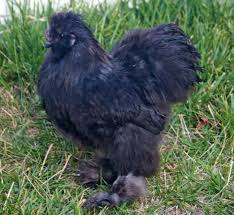
Black chicken
The Silkie (sometimes spelled Silky) is a breed of chicken named for its fluffy plumage, which is said to feel like silk, and satin. The breed has several other unusual qualities, such as black skin and bones, blue earlobes, and five toes on each foot, whereas most chickens only have four. They also come in a variety of colours, such as white, blue and light brown . Reports suggest that whilst their appearance may be unusual, the taste is second to none and will be a sublime addition to any home-cooked recipes. Apparently the flesh has a similar taste to that of game birds rather than that of regular chicken. Imagine some black chicken with black beans and black rice washed down with black grape juice.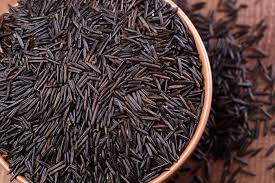
Black Rice
Brown rice is good for you, but black rice is even better. That’s because the bran hull contains significantly higher amounts of vitamin E, which bolsters the immune system and protects cells from free radical damage. In fact, black rice contains more anthocyanin antioxidants than blueberries, according to a study from the Louisiana State University Agricultural Centre. . An extract from the rice has been shown to effectively reduce breast cancer cells. It is rich in vitamins B and E, calcium, magnesium, iron and zinc as well. Black rice was so valued and rare in days past that emperors even declared it ‘forbidden’ to the common people.
Black cumin seed
This powerful seed, which goes by many other names such as Roman coriander, onion seed, black sesame, black caraway and simply black cumin kills MRSA, treats the body when chemical poisoning occurs, stimulates regeneration of dying beta cells within the diabetic’s pancreas, treats type 2 diabetes, improves liver function, epilepsy, high blood pressure, lowers cholesterol and helps decrease body fat.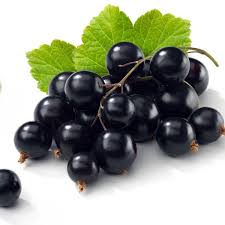
Black grapes
Research has shown that black grapes can contain up to 600mg anthocyanins, which is 100mg more than berries according to a study cited in the American Journal of Nutrition. Black grape’s greatness lies in their skins -the stronger the colour, the higher the concentration of flavonoids and therefore, the more antioxidants they contain. They have been shown to reduce the risks of heart disease and help protect against DNA damage that ages skin.
Black radish
Consumption of black radish is very effective in curing all sorts of skin disorders. In fact, black radish has an ability to treat skin itchiness, allergies, skin ulceration and body odour without any side effects . Regular consumption of black radish gives better result in clearing spots and acne within a few days. Black radish is also a perfect medicine for improving the functioning of the kidneys.
Black Beans
The dark skins of these beans are packed with bio-flavonoids — potent plant-based nutrients that may protect against cancer. Black beans contain cancer fighting antioxidants and anthocyanin along with butyric acid. Remember that anthocyanins destroy cancer cells and block the creation of blood vessels that feed tumours. High in fibre, black beans also help reduce colon cancer risk by as much as 75 per cent.
Black Lentils
Black lentils are loaded with iron: One cup has about 8 milligrams, getting you almost halfway to the daily requirement of 18 milligrams for women. Lentils also boast high levels of soluble fibre, which may not only lower your cholesterol, but could also improve immune function. Lentils are a protein super-food and also help with weight loss.
: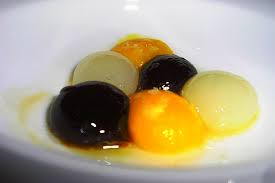
Blackberries
Polyphenols found in dark berries may help reduce cognitive decline in older people by cleaning up cells that impair brain function. Blackberries are also high in fibre . As one of the most antioxidant-rich foods, blackberries are a sweet addition to any diet and can be added to a hot bowl of porridge when eating to control diabetes. Overflowing in nutrients like vitamins C and K, folic acid, manganese, polyphenols, minerals and fibre, blackberries are an outstanding super-food. By reducing brain cell inflammation, these compounds enhance communication between the neurons, thereby improving memory and information processing.
Black Tea
Green and white teas get all the health hype, but black tea has its perks, too. It contains theaflavins — antioxidants that a study from Rutgers University in New Jersey suggests may improve recovery from muscle soreness after intense exercise. Drinking black tea may also lower your risk of having a stroke. It also prevents constipation, improves the complexion and slows down the aging process, normalizes blood pressure, improves memory, averts anaemia, maintains lustrous hair and fortifies the liver. Black tea is best drunk with lemon juice.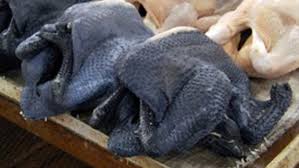
Chia
Once used by the ancient Aztec’s for stamina in battle, chia seeds are a terrific superfood for modern day warriors. Full of protein and omega-3 fatty acids, chia keeps energy levels up, inflammation and disease down. Omega-3 fats also foster a sharp mind.
Disclaimer: The contents of this website are not intended to replace a one to one relationship with your health practitioner nor are they meant as medical advice. You are encouraged to do your own research and make your own decisions in partnership with your medical practitioner.
